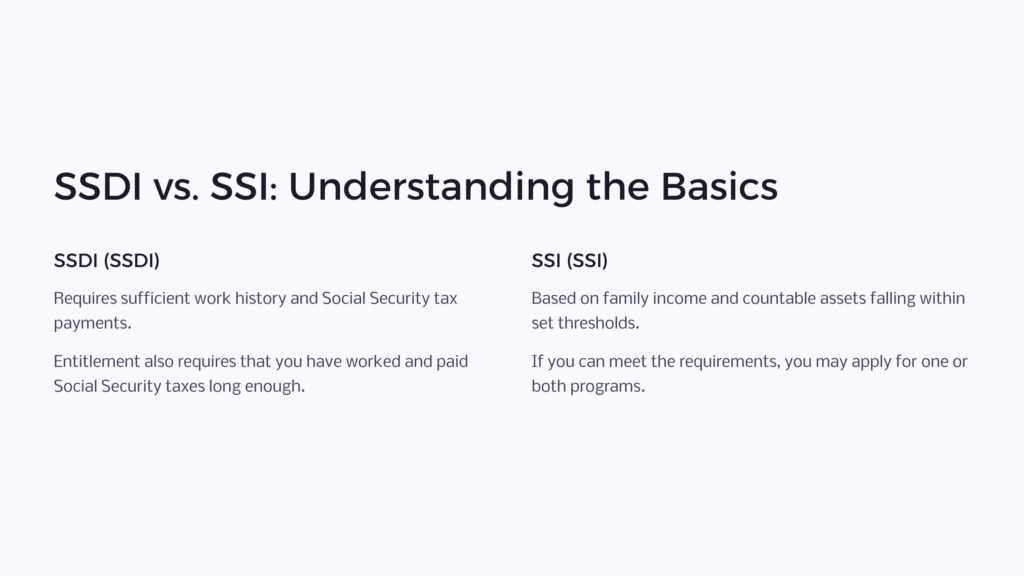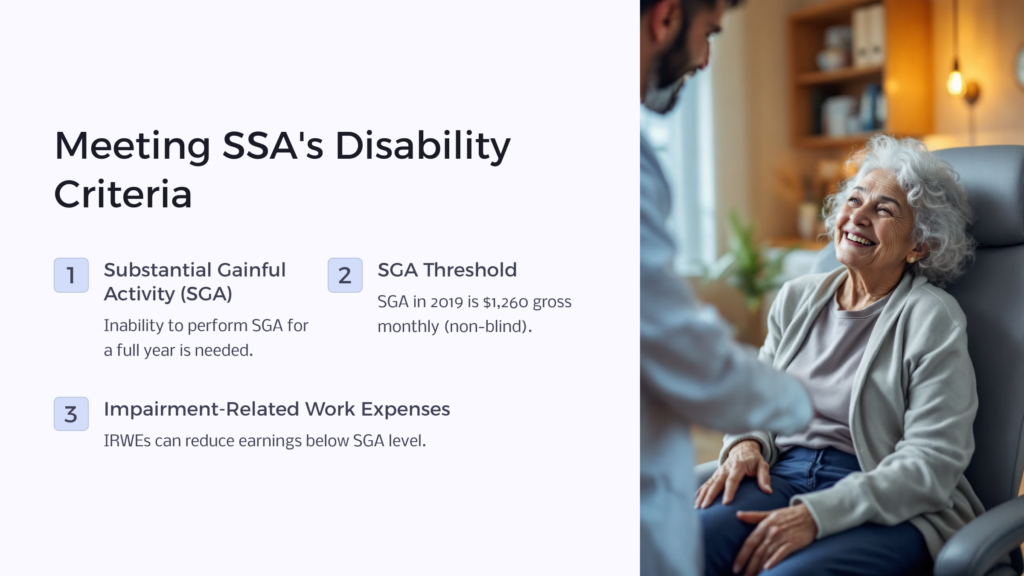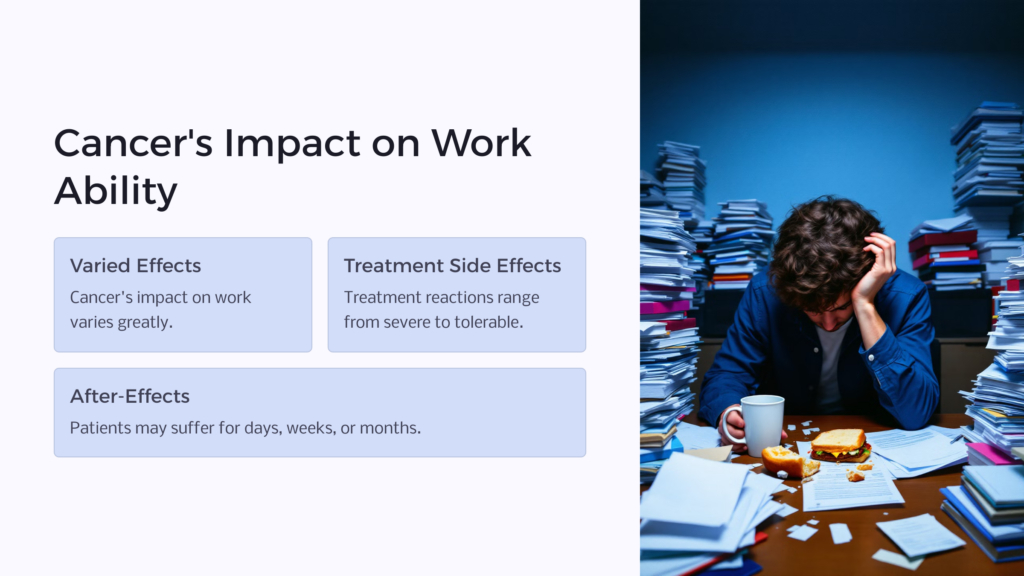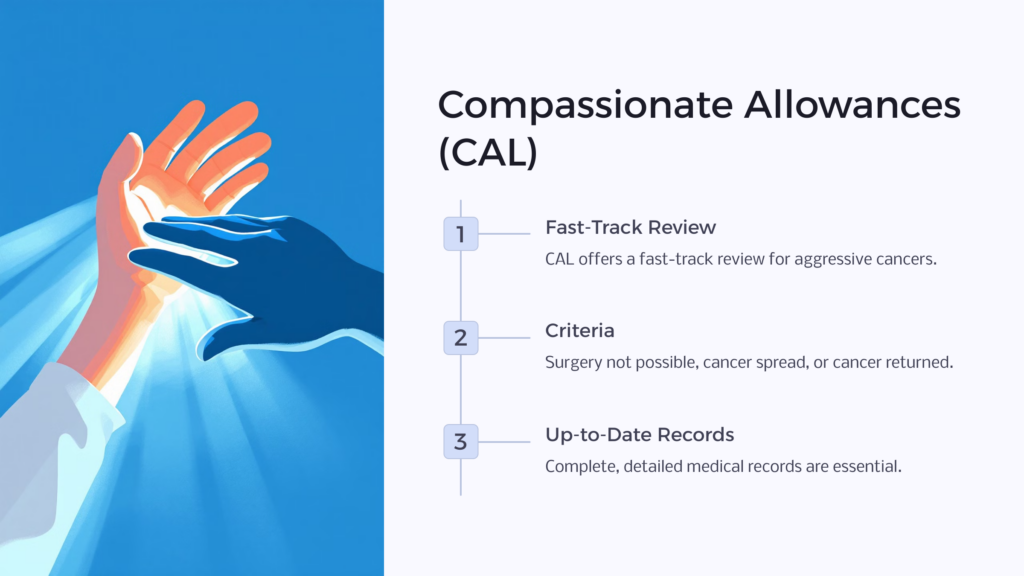There are two Social Security benefit programs for cancer sufferers: Social Security Disability Insurance (SSD aka SSDI) and Supplemental Security Insurance (SSI). Both pay disability benefits and both are administered by the Social Security Administration (SSA).

In addition to being disabled as defined by Social Security law, entitlement to the first, SSDI, also requires that you have worked and paid Social Security taxes long enough to be fully insured for benefits and recently enough to be currently insured for partial disability income replacement. The second, SSI, requires your family’s income and countable assets (not all are countable) to fall within the SSI thresholds. If you can meet the requirements, you may apply for one or both programs.
The Social Security Administration (SSA) has its own disability evaluation system. Because of this standard, many people will not qualify for Social Security Disability benefits; or even if they are disabled, their first application may be turned down because they are expected to be able to return to work or increase hours to SGA before a year is up. If you are denied due to expected short duration and you are still not back to SGA level work at the time of the denial, you can appeal. If you are able to meet SSA’s requirements, a monthly disability check could certainly help. It could assist you in meeting the rent or house payment, keeping food on the table, and helping to pay for medical bills including treatments and prescription drugs.

The general rule for disability is that you must have been or be expected to be unable to perform substantial gainful activity (SGA) for a full year. The year can be interrupted by short unsuccessful work attempts. So, if you tried to work after you first became disabled and had to stop due to your health in less than six months, the attempt will not make the clock start over.
SGA in 2019 for people who are not blind or legally blind is $1,260 in gross wages monthly or net self-employment profit. For a new claim more than 80 hours a month in self-employment activity and/or $1,260 net profit may be considered SGA. (The kind of services you perform for your business also may be considered in determining whether self-employment is substantial.) The benchmark for SGA for the blind is $2,110. If you earn at the SGA level, you may still be eligible if you have Impairment-Related Work Expenses (IRWEs) because IRWEs can be used to reduce your earnings to an amount below the SGA level.

Disability also means that you are unable to perform SGA not only in occupations you have done in the past but also in jobs new to you that have reduced physical or mental requirements because of the limitations caused by your disease or treatment.
With over 200 types of cancers, it is difficult to say how your particular illness will affect your ability to work. Some cancers are slow to develop while others are extremely aggressive, such esophageal, pancreatic, or liver cancer. In addition, the treatments given for your particular type of cancer will vary and your individual reaction to the treatments and medications may be severe to tolerable. Also, some patients suffer from the after-effects of the treatments for days, weeks, or months after completion of the treatment.
Determining the Onset Date
The SSA uses a one-year timeline from the date of onset to determine your qualification for disability benefits, so establishing the date you contracted a disease and when it or the side effects of the illness became so severe that you had to stop or reduce your work is very important. Be sure to choose the earliest date possible, which could be after the last time you sustained work for six months or more. If your medical doctor ran tests and scans and decided your tumor was not treatable or was inoperable as of a particular date and you were not performing SGA, the SSA may use that date as the “established onset date.
The SSA Blue Book
SSA uses what it calls their Blue Book, which breaks down numerous diseases and explains how they are evaluated to determine if benefits can be approved without consideration of your work experience, education, and age. Since there are so many types of cancer and some are more mild and treatable than others, not all will be covered in those listings, and the ones detailed are specific as to what factors are considered, such as:
- Location of where it began
- How involved it has become
- How long it lasts
- How it develops
- Probable response to treatment
- After treatment effects
If the cancer has metastasized (spread in a different location in the body not close to the original area), benefits are usually approved. However, if the original tumor has been removed and the secondary cancer is expected to be completely treatable, SSA may wait to see the results of such treatment before approving benefits.
If your cancer is not specifically listed in the Blue Book or does not have the findings required for the listing, a different review will be conducted by the disability examiner. With this review, additional records and details may be requested from you and your treating physician.
Medical Records Needed
Your complete medical file related to your cancer should be presented to the disability examiner at the time of your initial interview or application. (However, it is not necessary to submit a record of every frequent chemotherapy or radiation treatment. Just submit records that show the beginning and end dates, the frequency, the type of chemotherapy, and any side effects.)
Typically those records will include:
- Complete description of the cancer
- How far it has developed
- Where it first occurred
- If it reoccurred, what location
- Location of any metastatic lesions
- Medical Imaging reports
- Biopsy results
- Surgeries and notes
- If not operable, a doctor’s explanation as to why
- Pathology reports
- A detailed report of your treatment plan and your body’s response to it
Cancer Treatment Side Effects
Oftentimes, the treatment for cancer, such as radiation or chemotherapy, causes side effects that are worse than the disease seems at that point. Such reactions could be vomiting, disorientation, nausea, fatigue, diarrhea, lethargy, or skin issues. You may wonder if severe side effects would enable you to qualify for benefits. The difficulty with side effects is they usually fluctuate up and down as treatment goes on, and you may be able to work in between.
Some weeks may be worse than others. Whether or not you are considered disabled while working off and on depends on how much your are earning and how long you work each time and how long you are off work between work efforts, whether your employment is being subsidized by a kind employer, and whether or not you were off work for twelve months before you return to work during treatment. As part of the comprehensive documentation of your illness for benefits, you should keep a personal daily record of all the effects from both the disease and from the treatments. Make certain you keep your doctor advised of all of these changes. Also, include any witnesses to your adverse reactions.
Long-term side effects are easier for Social Security personnel to understand and document. Some of these may be permanent and may include organ damage, problems with the reproductive system, fragile bones, eye problems, intestinal disorders, lymphedema, neuropathy, or a decline in cognitive function that affects your ability to work.
Compassionate Allowances and Cancer

The SSA has a program called Compassionate Allowances (CAL). The program applies to some incurable illnesses that could result in death in a relatively short period of time. Aggressive forms of cancer are among those illnesses eligible for CAL processing. With CAL, the goal is to have a person’s claim reviewed for approval and payment as quickly as possible. There are three occasions where the CAL program may be implemented for an aggressive cancer.
- Surgery is not possible.
- The cancer has spread beyond the original source.
- The cancer has returned even though treatment was begun.
The goal of the CAL policy is to acknowledge the severity of your illness and allow you to get payments so you can concentrate on your treatments and try to get better.
Because this type of review is fast tracked, it is essential your medical records are completely up-to-date and thoroughly detailed. You don’t want your assessment delayed because of missing information. Work closely with your doctor to be certain the necessary facts are included and explain to him the requirements of Social Security.
Residual Functional Capacity Test (RFC) Rarely Done with cancer
The Blue Book listings are the first step in the approval process, but if your particular cancer does not fit any of the listings, SSA may request a Residual Functional Capacity (RFC) test from your medical doctor if your physical and mental capacities are not already documented in file.
In this assessment, the doctor will record your ability to stand, walk, carry, sit, push, pull, bend, and lift objects of different weights. The physician can also evaluate any cognitive deficits you may have due to treatment or the disease. This will help your disability examiner determine exactly what your limitations are because of your disease. If your residual capacity, that is, what you are still able to do with your illness or after your treatment, indicates you cannot return to a prior occupation, SSA will consider your age, job history, skills, and education to determine whether you can work in an occupation that is new to you. When a person reaches their fifties, SSA realizes it becomes increasing difficult for someone to move into certain careers. They take that into account when considering whether you are able to work in a new occupation.
Applying for SSDI and SSI benefits
Whether applying for SSDI or SSI or both, prepare yourself by having all of your records available, including medical records, tax forms, salary information, your work history, schooling, training, and if applying for SSI your asset and liability information. It is to your benefit to be able to submit everything needed the first time around because your chances of approval will be greater.
Both program applications will require a considerable amount of paperwork. Try to answer every question on every form, otherwise, the reviewer may be forced to follow-up and ask you the question again, just delaying your application. So if a question does not apply to you, enter “n/a” or “not applicable” so the evaluator will understand you did not skip over a question. Failure to answer a question clearly could result in a denial of your claim.
 Benefits.com Advisors
Benefits.com Advisors
With expertise spanning local, state, and federal benefit programs, our team is dedicated to guiding individuals towards the perfect program tailored to their unique circumstances.
Rise to the top with Peak Benefits!
Join our Peak Benefits Newsletter for the latest news, resources, and offers on all things government benefits.




















